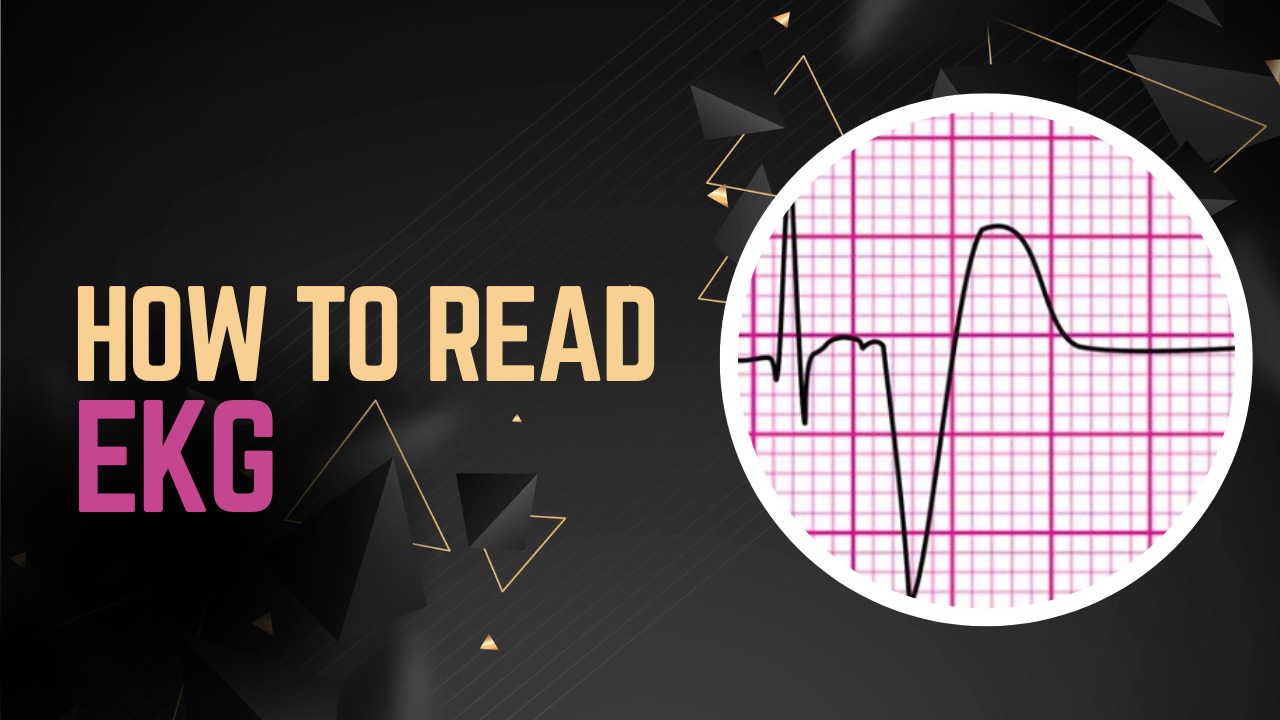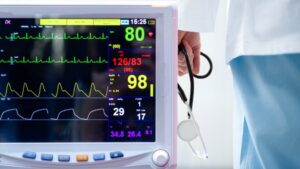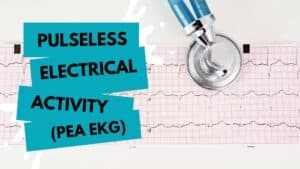Imagine a patient presents to you with chest pain. You know it might be related to a dozen causes, but the first thing you do is hook your patient up to an EKG. If you know how to read an EKG, you can quickly ascertain your patient is having a heart attack and begin necessary, life-saving treatment immediately.
Learning how to read an EKG can make the difference between life and death for your patients. EKGs can diagnose a host of potentially serious conditions, including heart attacks, thickened heart muscles, electrolyte imbalances, ischemia, and heart arrhythmias. Understanding an EKG can accelerate the diagnostic process so your patient gets the treatment they need as quickly as possible.
Decoding the EKG: An Overview
An EKG is a snapshot of the heart’s electrical activity. An EKG and an ECG are the same procedure, but with different spelling (elektrokardiogramm vs. electrocardiogram). The procedure records changes in the heart muscle over time. The activity is typically printed on a strip of paper to make interpretation easier.
How to Read an EKG: Know the Anatomy
An EKG consists of these essential components:
- P-Wave – records electrical activity in the upper heart chambers and represents contractions
- PR Interval – goes from the beginning of atrial polarization to beginning of ventricular depolarization
- QRS Complex – records electrical activity in the lower heart chambers and includes the Q wave (first downstroke), R wave (first upward deflection), and S wave (first downward deflection)
- T-Wave – also records upper heart activity, but represents relaxation
How to Read an EKG: Know the Anatomy
An EKG consists of these essential components:
- P-Wave – records electrical activity in the upper heart chambers and represents contractions
- PR Interval – goes from the beginning of atrial polarization to beginning of ventricular depolarization
- QRS Complex – records electrical activity in the lower heart chambers and includes the Q wave (first downstroke), R wave (first upward deflection), and S wave (first downward deflection)
- T-Wave – also records upper heart activity, but represents relaxation
How to Read an EKG: Understand Lead Placement
A 12-lead EKG is considered the gold standard, but you must know how to place the leads to get the most accurate readings. Each lead provides a snapshot of a different area of the heart. Six of the leads are limb leads, while the other six are precordial leads. Limb leads provide a vertical perspective, while precordial leads offer a horizontal perspective.
How to Read an EKG
Learning how to read an echocardiogram involves understanding the components listed above and how to put them together to read a strip. There are small and large boxes on the strip that measure time and distance. The heart’s activity is translated into line tracings consisting of dips and spikes that constitute waves.
The various components above make up the waves and by understanding the various elements and learning to measure them correctly, you can accurately interpret your EKG findings.
The EKG Alphabet: Understanding the Basics
The first step in knowing how to read an ECG is to determine whether a heart rhythm is normal, which requires your ABCs, or in this case, your ADDs:
- A is for Amplitude: Uncover the significance of wave height to measure the voltage of the beat
- D is for Deflection: Decode the meaning of deflection and which lead it’s coming from
- D is also for Duration: Grasp the importance of wave and interval duration (how long is it?)
Conversations with the Patient: Assessing Before Interpreting
Of course, your patient comes first and an assessment should be performed before analyzing the EKG, since this step will provide essential clues that will help you do an accurate analysis and act quickly based on what you learn.
Ask your patient some of the following questions:
- Where is the pain (chest or arm)?
What time of day do you experience the pain? - How would you describe the pain (sharp, squeezing, pressure, etc.)?
- Does the pain stay in one spot or radiate to other areas of the body?
- Do you have other symptoms (nausea, dizziness, lightheadedness)?
- Do you smoke and if so, how many packs a day?
- Have you ever been diagnosed with a heart condition?
As you are talking with the patient, look for some of the following signs:
- Damp, or clammy skin
- Skin color
- Breathlessness
- Ability to talk to you
- Palpation of peripheral pulse
- Capillary refill time
If your assessment of your patient doesn’t seem to match up with what the EKG is telling you, double-check your leads to ensure they have not moved or come loose.
The Art of Interpretation: A Systematic Approach
The first step in understanding an EKG is to examine the P-waves. You can find them at the beginning of the EKG cycle and they should be present and upright. If the P-wave is inverted or not present at all, it indicates an abnormality.
The next step is to measure the PR interval. You can do this by counting the small boxes between where the P-wave begins and the QRS complex peaks and multiplying that number by .04.. Step three is to measure the QRS complex by counting the small boxes from the beginning to the end of the complex and dividing by .04.
Next, you will want to examine the rhythm to determine whether it is regular, regularly irregular (in a recurrent pattern), or irregularly irregular (completely disorganized with no pattern). Finally, determine the heart rate by counting the large boxes between the R waves and dividing that number by 300.
The Heart-Patient Connection: Trusting Your Intuition
While knowing how to read an ECG provides extensive information about your patient’s cardiac activity, it is not a replacement for the instincts of an experienced healthcare provider. If the results seem “off”, don’t be afraid to investigate further to see if there is some detail of the patient’s condition that might have been missed. Seeking additional information or clarification may be vital for your patient’s wellbeing.
Remember that an EKG should always compliment your patient’s clinical presentation; never take the place of it. By refining your EKG interpretation skills and relying on the instinct you have honed over your years of caring for patients, you will be able to provide the most accurate assessment, diagnosis, and treatment plan.
Get the Training You Need to Take Patient Care to the Next Level
Learning how to understand an ECG report allows you to provide an even higher level of urgent care to your patients. SureFire CPR offers both online and in-person EKG certification classes to ensure training is as convenient as possible for your staff. The EKG introduction class (Level 1) is completely free. By making the training sessions interesting and fun, participants have better retention of the information while earning their completion certification and continuing education hours.
Now is the time to learn how to interpret an EKG and take your patient care to the next tier. To learn more about EKG training with SureFireCPR, contact us today.











